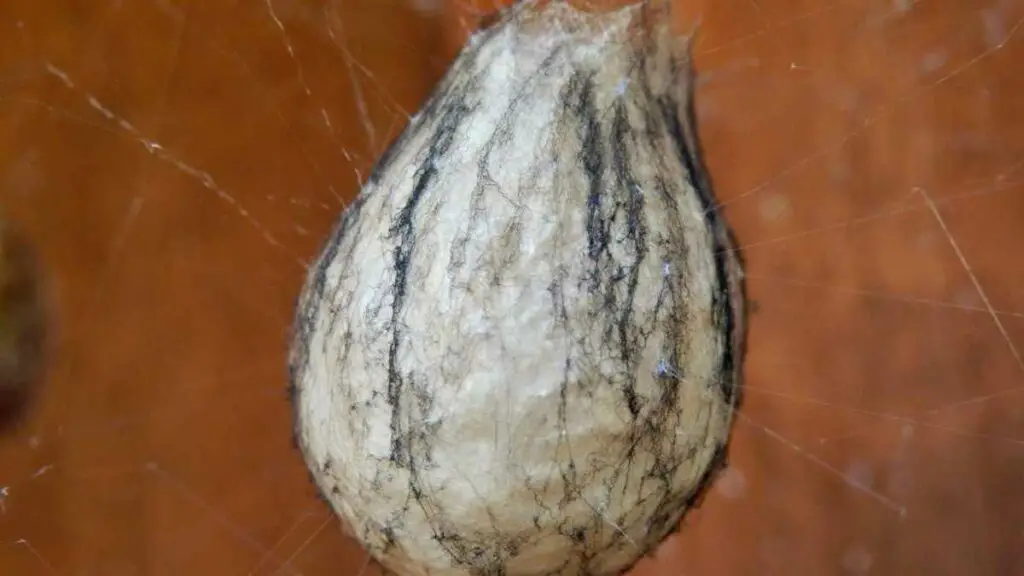If you’ve ever wandered outside, particularly in the late summer or early fall, you may have noticed peculiar, small, silken structures dangling from leaves or nestled amidst foliage. These enigmatic formations are commonly known as spider egg sacs, and they are a vital aspect of arachnid reproduction and survival. The sight of these egg sacs provokes curiosity and raises many questions about the life cycle of spiders, their habitats, and their roles in our ecosystems. In this article, we delve into the fascinating world of spider egg sacs, exploring their characteristics, types, significance, and more. Prepare to be captivated by these tiny, yet impactful, wonders of nature.
Spider egg sacs come in a variety of shapes, sizes, and materials. The most common appearance resembles a small, white or beige cocoon made of silk, often intricately woven and textured. Female spiders, driven by an instinctual compulsion not only to reproduce but also to ensure the survival of their progeny, produce these secure repositories for their eggs. The composition of an egg sac is not arbitrary; it is meticulously designed to protect the delicate eggs from environmental threats such as harsh weather, predators, and even parasitic organisms. The silk has remarkable properties—it’s robust yet flexible, ensuring both durability and adaptability.
One of the intriguing aspects of spider egg sacs is their varying shapes. Some may resemble tiny puffs or balloons, while others can appear flatter or even slightly elongated. Different spider species have unique methods and preferences for constructing their egg sacs, resulting in variances across the arachnid kingdom. For instance, orb-weaving spiders, known for their fabulous wheel-shaped webs, typically create spherical egg sacs that blend seamlessly with their surroundings, camouflaging them against potential threats. In contrast, funnel-web spiders craft egg sacs that nestle within the characteristic funnel-shaped webs they create, increasing the likelihood of keeping their young safe from intruders.
Beyond their mere appearance, the functions of spider egg sacs extend far into the intricate web of life in our ecosystems. Each egg sac can contain anywhere from a few dozen to several hundred eggs, depending on the species. The emergence of spiderlings from these sacs is a spectacle in itself. As the warm days of spring arrive, the female spider’s job reaches its zenith. She tenderly guards the egg sac until the time is right, often succumbing to the natural forces or predators, ensuring that her legacy continues. In a breathtaking display of nature’s cycle, the tiny, often minuscule spiderlings burst forth, each embarking on their own journey in the great, boundless world.
The significance of spider egg sacs transcends mere reproduction; they play a critical role in maintaining ecological balance. Spiders are invaluable contributors to the health of our environments, acting as natural pest controllers. The increased presence of spider egg sacs often heralds a resurgence of these beneficial creatures in gardens and landscapes. As the spiderlings grow, they partake in the delicate dance of predators and prey, keeping populations of insects in check. Their presence is vital in preventing pest infestations that can threaten crops and gardens alike. Thus, when we observe spider egg sacs in our surroundings, we witness not only the continuation of a species but also a natural equilibrium that humans often strive to maintain.
Despite their ecological benefits, there remains a palpable fear associated with spiders and their egg sacs. The very notion of encountering a swarm of tiny spiders can send shivers down one’s spine. However, it is essential to demystify these remarkable creatures. A greater understanding of spiders and their egg sacs can foster an appreciation for their role in the natural world. Beyond the spine-tingling aesthetic, these creatures embody resilience. Since time immemorial, they have thrived through various extinctions and environmental changes, evolving continuously to adapt to shifting ecosystems.
There is also an artful beauty embedded within spider egg sacs that captivates many nature enthusiasts. Photographers and naturalists alike find themselves drawn to the intricate webs and enchanting shapes, often capturing these ephemeral moments in their true elegance. Documentaries, blogs, and social media platforms are filled with stunning visuals that showcase the diverse cultures of spiders and their incredible survival mechanisms. The intricate lace of silk, the glistening dew that clings to a newly spun sac, and the bustling activity of spiderlings contribute to what can only be described as natural artistry.
In our fast-paced world, where nature often takes a backseat, observing and reflecting upon phenomena like spider egg sacs can remind us of the intricate connections within the tapestry of life. They inspire curiosity about the cycles of life and death, nurturing and vulnerability, and the importance of every creature, no matter how small. Whether you encounter them in your backyard or during a hike in nature, spider egg sacs invite us to pause and appreciate the wonders of our natural environment. They serve as a token of inspiration, symbolizing life, resilience, and interconnectedness that binds us all.
Exploring the world of spider egg sacs offers a glimpse into the captivating life cycle of these often-misunderstood creatures. From their protective silk structures to their essential ecological roles, they beckon us to lean in closer. By fostering a sense of wonder and observation, we can better understand the seemingly mundane aspects of nature that surround us—turning what could be a moment of fear into one of respect and admiration for the complex web of life that we are all a part of.









Leave a Comment